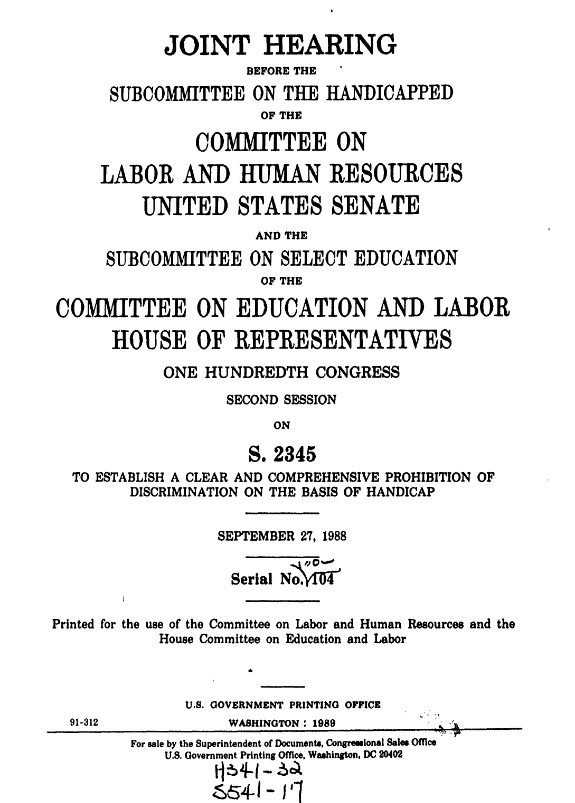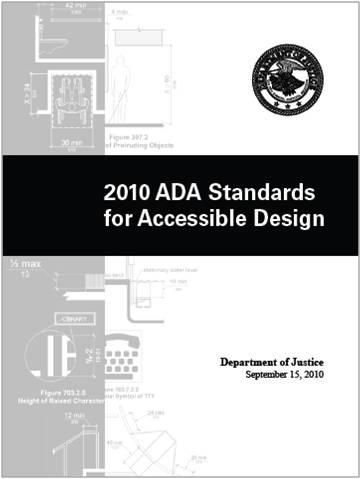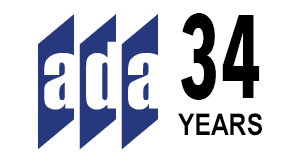Timeline of the Americans with Disabilities Act

1986
NCD: Toward IndependenceThe National Council on the Handicapped (now National Council on Disability, or NCD) issued its report Toward Independence; legislative recommendations include enactment by Congress of a “comprehensive” equal opportunity law, “perhaps under such a title as ‘The Americans with Disabilities Act of 1986.’"

1988
NCD: On the Threshold of Independence | Congressional Task Force | ADA Introduced: 100th CongressThe National Council on the Handicapped (now National Council on Disability, or NCD) issued its report On the Threshold of Independence.
The Congressional Task Force on the Rights and Empowerment of Americans with Disabilities was created by Rep. Owens, co-chaired by Justin Dart Jr. and Elizabeth Boggs.
The first version of Americans with Disabilities Act (ADA) was introduced by Sen. Weicker and Rep. Coelho in the 100th Congress.
1989
ADA Revised, Introduced: 101th Congress | ADA Passed SenateA revised Americans with Disabilities Act (ADA) was introduced by Sen. Harkin and Sen. Durrenberger, Rep. Coelho and Rep. Fish in the 101st Congress.
The ADA passed the Senate by a vote of 76 to 8.

1990
ADA Passed House | July 26: ADA SignedThe Americans with Disabilities Act (ADA) was passed and signed into law by President George H.W. Bush on July 26, 1990.
1991
Regulations Issued: | Title I - Employment | Title II - State & Local Government | Title III - Public Accommodations | Title IV - TelecommunicationsRegulations for Title I of the Americans with Disabilities Act (ADA) were issued by the U.S. Equal Employment Opportunity Commission (EEOC).
Regulations for Title II and Title III were issued by the U.S. Department of Justice (DOJ).
Transportation regulations for Title II and Title III were issued by the U.S. Department of Transportation (DOT).
Regulations for Title IV were issued by Federal Communications Commission (FCC).
1992
Effective: | Title I of the ADA (25>employees), | Title II, Title III of the ADATitle I of the Americans with Disabilities Act (ADA) took effect for employers with 25 or more employees.
Title II and Title III took effect.
1993
Effective: Title IV of the ADATitle IV of the Americans with Disabilities Act (ADA) took effect.
1994
Effective: | Title I of the ADA (15>employees)Title I of the Americans with Disabilities Act (ADA) took effect for employers with 15 or more employees.

1999
Supreme Court Cases: Olmstead and Sutton TrilogyThe Supreme Court ruled in Sutton v United Airlines, Murphy v United Parcel Service, and Albertson’s Inc. v Kirkingburg (the “Sutton trilogy”), narrowing the definition of disability by holding that people who use “mitigating measures,” such as medication, may not be protected by the Americans with Disabilities Act (ADA).
The Supreme Court ruled in Olmstead v L.C., recognizing that the “unjustified institutional isolation of persons with disabilities is a form of discrimination” and holding that services must be provided in integrated, community-based settings when possible.
2002
Supreme Court: ToyotaThe Supreme Court ruled in Toyota Motor Manufacturing v Williams, further narrowing the protections of the Americans with Disabilities Act (ADA) by holding that the terms of the definition of disability “need to be interpreted strictly to create a demanding standard.”
2004
NCD: Righting the ADANational Council on Disability issued its report Righting the Americans with Disabilities Act (ADA), urging the Administration and Congress to support legislation to restore the original intent of the ADA and counteract the Supreme Court rulings that had narrowed the scope of the ADA’s protections.
2006
Updated Transportation RegulationsRevised transportation regulations for Title II and Title III of the Americans with Disabilities Act (ADA) (facility standards) were issued by Department of Transportation.

2008
ADA Amendments Act (ADAAA) SignedThe ADA Amendments Act (ADAAA) was signed into law by President George W. Bush to counteract the Supreme Court’s narrow interpretation of disability and provide broad protection from discrimination.
2009
Effective: ADAAAThe ADA Amendments Act (ADAAA) took effect.

2010
Updated Regulations: Title II, Title III | More Updated Transportation RegulationsRevised regulations for Title II and Title III of the Americans with Disabilities Act (ADA) were issued by Department of Justice.
Revised transportation regulations (passenger vessel operators) for Title II and Title III of the Americans with Disabilities Act (ADA) were issued by Department of Transportation.
2011
Still More Updated Transportation RegulationsRevised transportation regulations for Title II and Title III of the Americans with Disabilities Act (ADA) (boarding at rail platforms, miscellaneous) were issued by Department of Transportation.
2013
Updated Regulations: Title I of the ADARevised regulations for Title I of the Americans with Disabilities Act (ADA) were issued by the U.S. Equal Employment Opportunity Commission (EEOC).
2014
U.S. Access Board and DOJ Updated Guidelines and RulesThe U.S. Access Board is developing or updating guidelines for electronic and information technology, telecommunications products and services, public rights-of-way, passenger vessels, and medical diagnostic equipment; visit https://www.access-board.gov/ for more information and watch for opportunities to participate in the rulemaking by submitting your comments.
Department of Justice is developing or updating rules to address web information and services, movie captioning and video description, equipment and furniture, and next-generation 9-1-1 services; visit https://www.ada.gov/newproposed_regs.htm for more information and watch for opportunities to submit your comments.

2015
Celebrating 25 YearsThe 25th Anniversary of the Americans with Disabilities Act is July 26th, 2015!
Learn about the ADA Anniversary and how to participate.
2024
Celebrate ADA 34 YearsCelebrate ADA 34 Years (1990-2024) Americans with Disabilities Act (ADA).
+ #ThanksToTheADA Campaign
+ ADA Anniversary Tool Kit, Logos and Social Media
+ Add Your ADA34 Event

.png)




